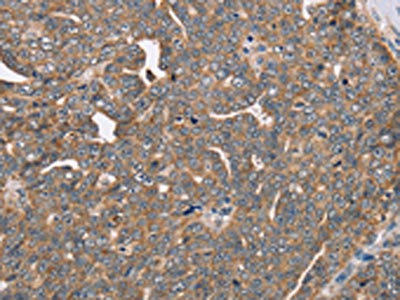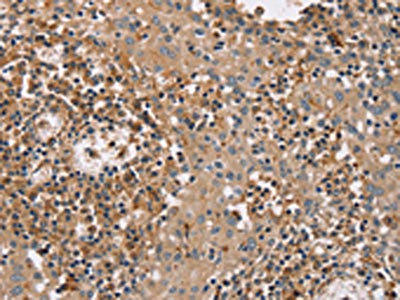
The image on the left is immunohistochemistry of paraffin-embedded Human cervical cancer tissue using CSB-PA286186(FAIM2 Antibody) at dilution 1/40, on the right is treated with fusion protein. (Original magnification: x200)
FAIM2 Antibody
CSB-PA286186
ApplicationsELISA, ImmunoHistoChemistry
Product group Antibodies
ReactivityHuman, Mouse, Rat
TargetFAIM2
Overview
- SupplierCusabio
- Product NameFAIM2 Antibody
- Delivery Days Customer20
- ApplicationsELISA, ImmunoHistoChemistry
- CertificationResearch Use Only
- ClonalityPolyclonal
- ConjugateUnconjugated
- Gene ID23017
- Target nameFAIM2
- Target descriptionFas apoptotic inhibitory molecule 2
- Target synonymsLFG; LFG2; neural membrane protein 35; NGP35; NMP35; protein lifeguard 2; TMBIM2; transmembrane BAX inhibitor motif-containing protein 2
- HostRabbit
- IsotypeIgG
- Protein IDQ9BWQ8
- Protein NameProtein lifeguard 2
- Scientific DescriptionFAIM2 (Fas apoptotic inhibitory molecule 2), also known as LFG (Protein lifeguard), TMBIM2 (Transmembrane BAX inhibitor motif-containing protein 2) and NMP35 (neural membrane protein 35), is a 316 amino acid multipass membrane protein that uniquely protects cells from Fas-induced apoptosis. Though widely expressed, FAIM2 expression is highest in hippocampus. FAIM2 contains seven transmembrane domains and resembles Bax Inhibitor-1, another anti-apoptotic protein. Overexpression of FAIM2 results in decreased caspase activation and reduced incidence of programmed cell death.
- ReactivityHuman, Mouse, Rat
- Storage Instruction-20°C or -80°C
- UNSPSC12352203

